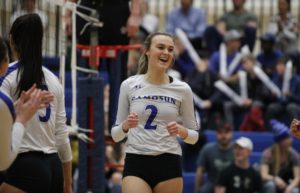As case numbers of COVID-19 continue to go down and vaccination numbers continue to go up across the province, the Camosun Chargers are gearing up for what it hopes will be the return of spectator sports at Camosun in September.
The Chargers—who play at the Pacific Institute for Sport Excellence at Camosun’s Interurban campus—haven’t played since March 2020. Under phase 4 of BC’s restart plan, a “return to normal sport competitions with an updated COVID-19 Safety Plan in place” could happen as early as September 7 at the direction of provincial health officer Bonnie Henry.
Camosun director of student affairs Evan Hilchey, who is also currently Chargers acting athletics director, says the college is working with provincial guidelines and other safety primers.
“From there, we’ll make a determination of when it’s safe to play within our college facilities,” he says. “We have been eagerly reviewing the Return to Campus Primer that was released, and the former return to campus guidelines, and have been working with occupational health and safety to make sure that we have all the appropriate assessments and risk-mitigation factors in place for a safe competition.”

Hilchey says that student-athletes have enjoyed being able to practice—which has been permitted through public health orders—this year, but are looking forward to getting back to normal.
“Varsity sports play a really important part of community development,” says Hilchey. “Having opportunities for students and student athletes to engage in sports and to compete with other schools creates a sense of camaraderie [and] community through opportunities for our community to come out and cheer on our Chargers team.”
Chargers women’s volleyball right side hitter—and fourth-year general studies student—Hannah May says the women’s volleyball team has been practicing four to six times a week and that the team has “really been breaking down every part of our game.”
“We decided as a team we were going to do our best to improve in every aspect, so we showed up every day not knowing when we would actually be able to play again, but we all pushed each other… so that when we do get the chance to play again, hopefully this fall, we’re going to be in the right spot that we need to be in to go for that national championship next year,” she says.
May says that it’s surreal that “there’s a really good chance” the team is going to have their season in September, with spectators.
“It makes us never want to take for granted paying college sports again,” she says.
An extra opportunity for a year of training put each individual athlete further ahead, says May. She really enjoyed the low-pressure aspect to training.
“There was no pressure of fighting for playing time, no pressure of, ‘Oh, I have to get better,’” she says. “We were just able to fully have a growth mindset all season.”
